Quick Links
Microsoft announced its partnership with OpenAI in the summer of 2022 after witnessing what its next-gen GPT model could do.
In February of 2023, Microsoft unveiled its new and improved version of Bing, which integrated with OpenAI’s ChatGPT to generate real-time responses to user queries.
As of May 4th, 2023, the new version of Bing search is now live and available for anyone willing to test it out.
How does the new search engine affect Bing SEO?
While the new Bing is still in its infancy, its advanced features are sure to shake up the SEO world in a big way, potentially even for SEOs that only focus on Google.
That’s because ever since Microsoft gave Bing a new makeover, it’s seen a dramatic uptick in users.
Microsoft Bing is now visited by more than 100 million users per day, which is a significant increase from where they were just a few months ago.
While Google Search has long dominated SEO and still has a majority of the market share, their recent gaffes (we’re looking at you, Bard rollout) and Bing’s growing presence means the tides may be starting to change.
So if you’ve never incorporated Bing in your SEO strategy before, it might be time to start.
However, there’s quite a bit to know about the new version of Bing, especially for search engine optimizers.
That’s why we put together this extensive guide, so read on to learn how to use Bing like a total pro.
The New Bing and ChatGPT
Microsoft’s partnership with OpenAI led them to develop a special version of ChatGPT used specifically for the Bing search engine.
It uses a special version of the GPT language model called GPT-3.5, and Microsoft claims their version of ChatGPT is faster, more accurate, and customized for search engines.
To experience the new version of Bing, users will have to download the Microsoft Edge browser – as that’s the only way to access ‘conversational search’ through ChatGPT.
The traditional version of Bing displays on all other browsers like Chrome, Firefox, and Safari.
Bing Chat allows users to ask complete questions instead of strictly using search engine queries.
Here’s an example of what we mean.
On the old Bing (and Google), if you wanted to learn more about the guitar, you’d search for a keyword like ‘guitar tips and tricks.’
This brief phrase will connect you with content that provides guitar tips and tutorials (especially for websites targeting that specific keyword).
That’s how search engines have worked for decades, and we’ve become accustomed to typing in short queries and phrases to find the content we need. That’s also how search engine optimization works, by optimizing and creating content based on popular keywords in your niche.
Yet, the new version of Bing is completely changing this model.
It provides a more conversational experience, which is one of the biggest selling points of the new platform.
What’s conversational search?
The new Bing promises conversational search for its users, which is a brand-new approach to operating a search engine.
Going with the ‘guitar tips and tricks’ example above, if you were searching through Bing Chat search, you could search for a complete phrase like, “I want to learn how to play the guitar; what’s the best way to do that?”
Bing would interpret this prompt and do several searches throughout the web for relevant content.
It would then summarize the top answers it found in an easy-to-digest format.
That makes it easy for users to quickly find the information they need without having to browse multiple results.
What’s even cooler is that you can continue to ask Bing questions based on your previous queries.
For example, if you wanted to learn more about fingerpicking in particular, you could ask Bing, “I already know the basics; what about fingerpicking lessons?”
The Bing search results and chat response will then change based on this new prompt – effectively allowing you to ‘converse’ with the search engine, uncovering more relevant results with each query.
We’ve long been trained to type very rigid, specific-sounding keywords into search engines for many years now.
The new Bing breaks that mold, which is both promising and a bit intimidating.
Still, it’s hard to deny the massive potential of this style of search engine, as its ease of use and conversational flow could completely revolutionize the way people look up information online.
What can the new Bing do that Google can’t?
Besides using the new Bing to handle all traditional search queries, its chat feature has some capabilities never seen before in a search engine.
For one, you can ask additional questions about your query, and Bing will continue to respond with new information each time.
Not only that, but Bing can even solve problems for you if you ask.
For instance, if you’re having trouble with a line of code, you can ask Bing’s AI to fix it for you in a matter of seconds. It’ll even provide a detailed breakdown of how it diagnosed and solved the issue for you to reference in the future.
You can also get Bing to do the following:
- Write original essays, poems, and short stories
- Brainstorm ideas for creative writing, speeches, and business presentations
- Solve complicated math problems
- Assist with keyword research
- Uncover link-building opportunities in your niche
- Find ways to rephrase sentences and paragraphs
As you can see, you can get the new Bing to do just about anything for you, which provides a high-quality user experience that reaches new levels of user engagement.
There are even ways you can use Bing to improve your digital marketing and SEO strategies, like using it to enhance your keyword research and link-building efforts.
What Other Features Does the New Bing Offer?
The Bing search engine received a complete overhaul, and the changes stretch beyond including ChatGPT.
Here’s a look at the other features offered by the search engine:
- Shopping. Bing offers an enhanced shopping experience that features high-resolution product images, prices, descriptions, ratings, and more. Users can also access shopping results via AI chat.
- Images. There’s also an image search, where users can search the web for relevant images categorized by size, color, and other parameters. Bing’s AI chatbot can also display images based on user prompts.
- Videos. Just like Google, Bing has a video search used to find clips on YouTube and other video-sharing sites.
- Maps. Users have the ability to search for locations around the world and receive detailed walking/driving directions.
- News. This search specifically looks for current events related to the user query.
- Flights. If you’re planning on traveling, the flight search will help you find air travel.
- Hotels. Quickly and easily compare and contrast hotel prices in the location of your choosing.
It’s important to note that Bing’s version of ChatGPT can pull content from all these different search types, so if you want to find the cheapest hotel in St. Louis, you could just ask Bing Chat.
Still, it’s nice to have so many options available when using Bing, especially for users that don’t have Microsoft Edge.
What are the Benefits of Using Bing SEO?
Now that you know more about everything the new Bing has to offer, why should you use it for your SEO strategy?
After all, isn’t Google still the dominant force in the SEO game?
They are, but it’s likely that they won’t stay on top forever.
Bing SEO is already gaining serious traction, and there are some attractive benefits to using Bing for your SEO instead of Google (or in addition to).
Here’s a look at the top benefits you’ll enjoy from launching a Bing SEO campaign.
Fewer competitors
This benefit has long been the selling point of Bing SEO, even before the partnership with OpenAI.
Since Google hogs 84.69% of the search engine market (down from 92.15% in 2021, which is more evidence that their dominance is fading), keyword competition for every niche & industry is extremely fierce.
Conversely, Bing only holds 8.85% of the market, making it far easier for businesses to dominate the Bing rankings with the right optimization strategy.
While it may take thousands of dollars and several years to reach a top spot on Google, you’ll likely be able to reach the same spot twice as fast on Bing.
That means you’ll start generating organic traffic and leads a lot faster, and you’ll have a much easier time guarding your #1 spot.
So if your niche has extremely steep competition on the Google SERPs, it’s worth branching out to see what the search engine rankings look like for your keywords on Bing.
You may find that you’re the only game in town, meaning you can become the dominant player in your space on Bing.
With Bing’s popularity on the rise, securing high-ranking positions on Bing sooner rather than later is a good idea for SEOs. That way, if and when Bing starts to seriously challenge Google’s dominance, you’ll already be at the top of the SERPs.
Clear ranking factors
A distinct advantage Bing SEO has over Google is the transparency of its ranking factors.
In other words, Bing isn’t as tight-lipped about its ranking factors as Google.
If you’ve done any type of SEO work for Google, you’ll know about their secretive and, at times, confusing ranking factors – of which there are over 200.
What’s more, is that Google doesn’t provide an official list of its ranking factors, and it does this deliberately.
That’s because Google doesn’t want anyone to know their exact formula for ranking websites, as they feel that would encourage people to find ways to game the system.
Since it’s their goal to provide users with the most relevant, highest quality content, Google doesn’t want anyone to know how to cheat their rankings and get low-quality spam in their top results.
For instance, many SEOs falsely thought that Moz’s domain authority score was an official Google ranking factor when it was developed by a third-party company (Moz) to approximate the strength of a domain.
Google has repeatedly stated that they don’t consider a site’s domain authority score as a ranking factor.
This type of confusion is common for many Google ranking factors.
However, Bing is extremely transparent with SEOs about the ranking factors their Bingbots use when crawling and indexing websites (more on these factors in a bit).
As such, you’ll have an easier time optimizing your content to rank on Bing since you’ll know exactly what their bots want to see.
It’s excellent for local businesses
Bing Places is Microsoft’s equivalent to Google Business Profile, and it’s a great spot for local businesses to promote their products and services.
If the local SEO is fiercely competitive in your niche on Google, it’s worth giving Bing Places a try.
Much like GMB, optimizing your business profile on Bing Places is the best way to improve your local SEO profile.
That means adding your business name, address, phone number, reviews, social media profiles, services, and products to Bing Places – which will also make it easier for your business to appear in Bing Maps.
Bing is in the sweet spot of having enough users to generate traffic & sales while not having enough competitors to make SEO too challenging.
Bing optimization also works for Yahoo
Ever since July 2009, Bing has been the power source for fellow search engine Yahoo.
How does this affect Bing SEO?
It means that whenever you optimize your website to rank on Bing, you’re also optimizing it to rank on Yahoo.
The best part is that you don’t have to do any additional work for Yahoo, as the ranking factors are exactly the same.
That means you’ll have twice the SEO power, so you’ll generate even more organic traffic.
Yahoo sees an average of 700 million users on its mobile version each month, and it accounts for 2.44% of the overall search engine market.
That’s nothing to shake your stick at, especially if your website is well-optimized for mobile devices and desktop searches.
Bing webmaster tools
Every SEO that optimizes for Google knows that setting up your website on Google Search Console (GSC) is a definite must.
The tool is free to use, and you get exclusive insights into how well your site is performing on Google – including the presence of any indexing errors.
Without using GSC, all your SEO tactics are basically shots in the dark.
With GSC, you can upload your sitemap to help with indexing, view current search engine rankings, check your click-through rate (CTR), and so much more.
Does Bing SEO have a tool that’s equally as useful?
Yes, it does.
Enter Bing Webmaster Tools, Microsoft’s version of Google Search Console.
With it, you can perform any task that you would on GSC, including viewing crucial SEO metrics, current rankings, indexing errors, and so much more.
You can also use Bing Webmaster Tools to inspect and troubleshoot your URLs, upload XML sitemaps, conduct keyword research, and view your backlink profile.
There are also SEO reports that range in severity, such as missing meta tags, poorly optimized anchor text, duplicate content, and missing H1 tags.
Reach different demographics
Bing has drastically different demographics than Google, which can work out in your favor if your target audience consists of an older crowd with high incomes.
Also, many like to use Bing to conduct product research (55% of its users, to be exact) and brand discovery (38%).
A majority of Bing’s users are aged 45 or older, which is in stark contrast to Google, which only has around 22% in the same demographic.
If your business targets older adults that have disposable income (or children that live at home), optimizing your website for Bing searches will help you reach more of your target demographic than Google.
Bing also tends to value longer, more in-depth posts than short-form content. That’s something to bear in mind if you primarily produce long-form content for a lengthy B2B sales cycle.
Alexa and Cortana voice searches go through Bing
Have you ever had Cortana or Alexa answer a question for you?
If so, then both programs went through Bing to find the answer.
Microsoft Bing powers both virtual assistants, so if you optimize your website to rank on Bing, Alexa, and Cortana will start to reference your high-quality content for their voice search queries.
It’s yet another way that Bing SEO can net you organic traffic and expose your brand to new audiences.
Voice search is often overlooked in the SEO world, but you can most certainly use it to boost your online visibility.
Alexa and Cortana are the leading virtual assistants, as they both account for a large portion of the market share.
Not only that, but their users ask them dozens of questions, as 64% of men and 53% of women use their virtual assistants every single day.
That means there are countless opportunities for your brand to appear in voice search results, and optimizing your website for Bing is the best way to capitalize on them.
How to Set Up Bing Webmaster Tools
You can’t conduct a successful Bing SEO campaign without getting set up on Webmaster Tools first, so it’s time to learn how to do just that.
The good news is that setting up Bing Webmaster Tools is a fairly straightforward process.
Also, to learn more about how Bing crawls, indexes, and ranks websites, check out the Bing Webmaster Guidelines.
Step #1: Create a new Webmaster Tools account
First, head to the Webmaster Tools homepage, and click on ‘Get Started.’
To create an account, you’ll need to sign in using an existing Microsoft, Facebook, or Google account.
If you don’t have an active account on any of these platforms, you’ll need to create one now (creating a Microsoft account would make the most sense in this case).
Once your account is ready, you’ll see a blank Webmaster Tools dashboard. Now it’s time to add your website URL.
Step #2: Add your URL
Under ‘My Sites,’ you’ll see a text box that says ‘Enter site URL’ and a button that says ‘Add.’
This is where you enter your website URL so that you can view your website metrics through the dashboard.
Simply copy and paste your URL into the box, and hit ‘Add.’
Next, you’ll need to tell Bing a little bit more about your website, including uploading your sitemap.
Step #3: Upload your sitemap
Under ‘About My Website,’ you’ll see your website’s URL and a box where you can add a sitemap by pasting an XML file.
Why is this important?
It is because your sitemap will give Bing full visibility of your entire website, which is the best way to ensure that all your most important pages get indexed and ranked in the SERPs.
Once you’ve entered your sitemap, hit Save, and you’re ready to move on to the next step.
Step #4: Verify ownership of your website
The final step is to verify your account, and there are several ways to do so.
Here are the different methods you can use:
- XML file. You can verify ownership of your site by downloading the Bing XML file and then uploading it to your domain’s root folder. That’ll create a special URL that looks like this ‘yoursite.com/BingSiteAuth.XML. To complete the verification process, you’ll need to visit the URL in your browser and then hit the ‘Verify’ button.
- Meta tag. If you don’t want to bother with the XML file, you can opt to add a simple meta tag (similar to a meta description) to your homepage. If you can enter custom HTML with your CMS, you can easily add the meta tag that way. You’ll need to keep the meta tag in place for your website to remain verified.
- CNAME record. You can also add a CNAME (a domain alias) record via your hosting provider, which can either be extremely easy or pretty tricky, depending on who you use. Basically, you add a CNAME record with your URL and the value verify.bing.com.
Once you’ve verified ownership, you’re free to start using Webmaster Tools to inform and guide your Bing SEO strategy.
What Are Bing’s Top SEO Ranking Factors?
We’ve already mentioned that Bing has a clear set of ranking factors that anyone can learn, but what are they?
Let’s take a look at the most important ranking factors on Bing while providing candid SEO tips along the way.
Social signals
There’s long been a heated debate over whether social signals (engagement on social media such as likes, shares, and comments) play a part in Google SEO (another side effect of their secretive ranking factors).
One thing is for sure, though – Bing places far more emphasis on social signals for SERP rankings than Google does.
When trying to generate Bing traffic, your social signals will play a big part in your rankings, so be sure to encourage as much interaction with your social media accounts as possible.
User Engagement
One of Bing’s most crucial ranking factors is user engagement, which it measures through a metric known as ‘pogo-sticking.’
A user ‘pogo sticks’ whenever they click on a search result and almost immediately click back to the results page.
It’s similar to Google’s bounce rate metric, but it’s a lot more important on Bing.
If someone clicks off your page almost instantly, it’s a pretty clear sign of a poor user experience. It could be that your load times are abysmal, or your UI could be a total mess. Either way, you want to do what you can to ensure that users click on your content and don’t immediately pogo stick away.
Domain keywords
It used to be that including your target keyword in the page’s URL was a necessity for Google SEO until an update nerfed its impact several years ago.
However, domain keywords are extremely important for Bing SEO.
So whenever you’re creating new page content, make doubly sure that you’ve included your primary keyword in the URL.
Backlinks and page authority
While backlinks are the backbone of Google SEO, they matter far less to Bing.
You read that correctly; backlinks don’t matter as much with Bing SEO.
What does matter a lot to Bing is site and page authority.
In other words, Bing prefers older domains. It’s very difficult to rank a new domain on Bing, so if you have a brand-new website, your best bet is to stick with Google SEO.
However, if you have an older domain and you include your keywords in your URLs, you should find great success on the Bing SERPs.
Content quality and keyword usage
Much like Google, Bing values high-quality content that’s well-produced and helpful to users.
However, Bing places a lot more emphasis on engaging, long-form content.
So if you’re starting a content marketing strategy on Bing, longer videos and long-form blog posts are the way to go.
Keyword usage is also important, but density isn’t as big of a deal.
In fact, your best bet is to stick to one keyword per page.
Anchor text usage
While backlinks aren’t as important, Bing places a lot of emphasis on anchor text.
To see the best results, your links coming from high authority sites should use exact match anchor text.
That’s because Bing isn’t as good as Google at keyword matching, so it needs a little extra help.
Click-through rates
Besides the pogo-sticking metric, Bing also looks at click-through rates to determine the quality of a website.
If a URL has a better click-through rate than a competitor, it will rank higher on Bing.
To improve your click-through rates, you need to write enticing title tags and meta descriptions that directly appeal to your target audience.
Final Takeaways: Using Bing SEO in 2023
Microsoft’s Bing has undergone a significant transformation since integrating with OpenAI’s ChatGPT.
The search engine now sits at the cutting edge of artificial intelligence, and it’s attracting new users and fans every single day.
Bing SEO is now more relevant than ever, so you shouldn’t put off optimizing your website for it any longer – especially if you’re struggling with steep competition on Google.
Do you need help devising a Bing SEO strategy for your business?
Then don’t wait to check out our incredibly effective managed SEO service, HOTH X. Our SEO gurus will develop a tailor-made SEO strategy for your website to take your business to the next level, so don’t wait to contact The HOTH team now.



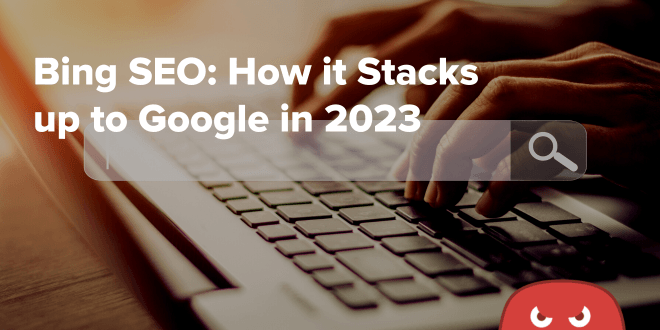



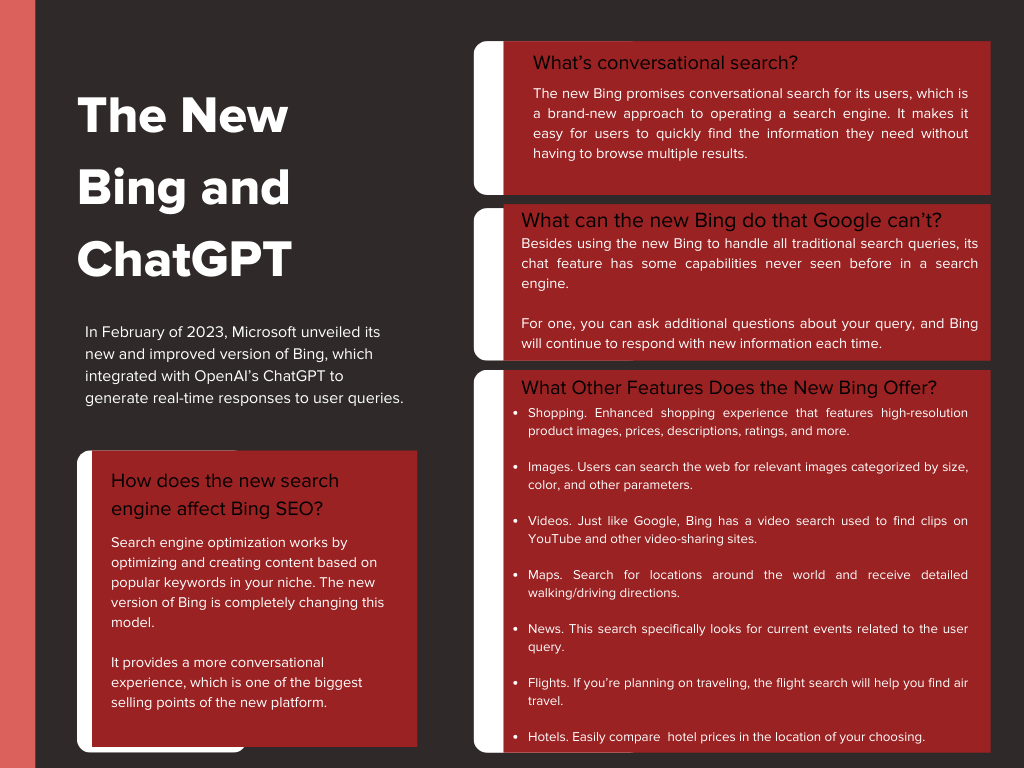
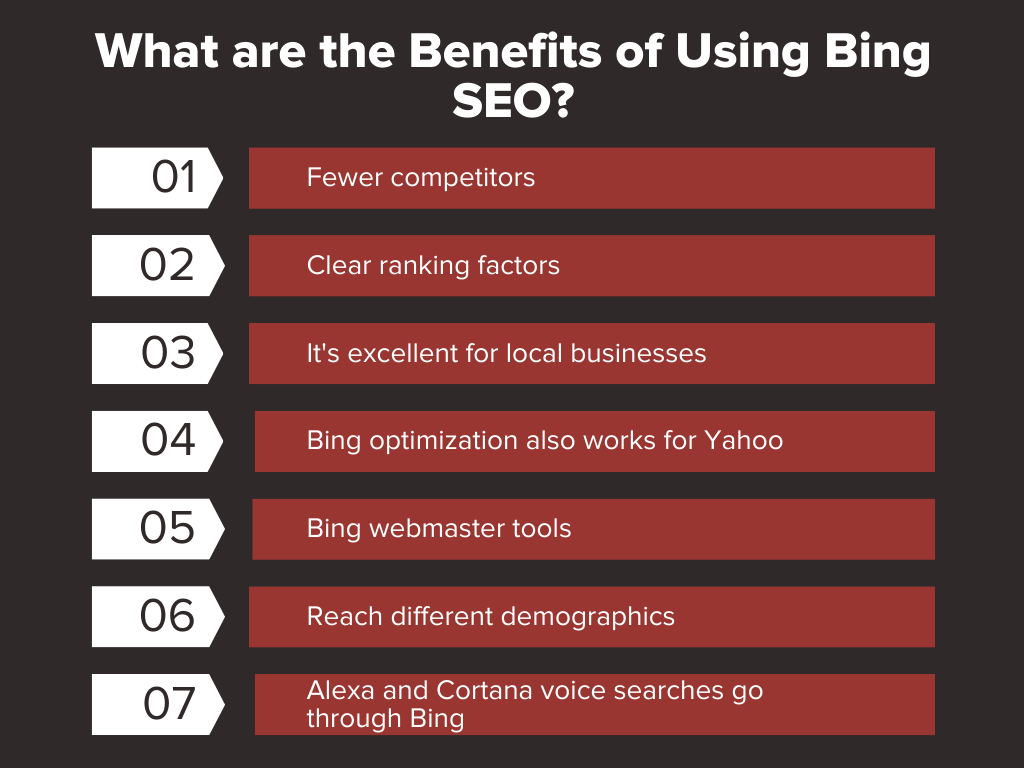
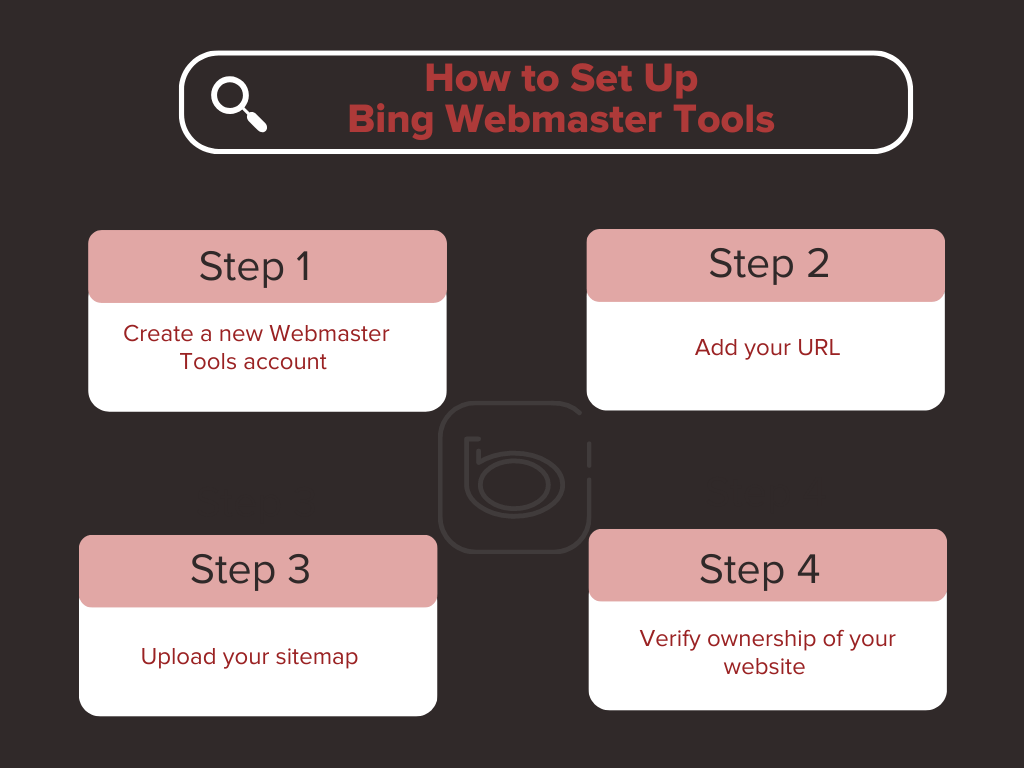
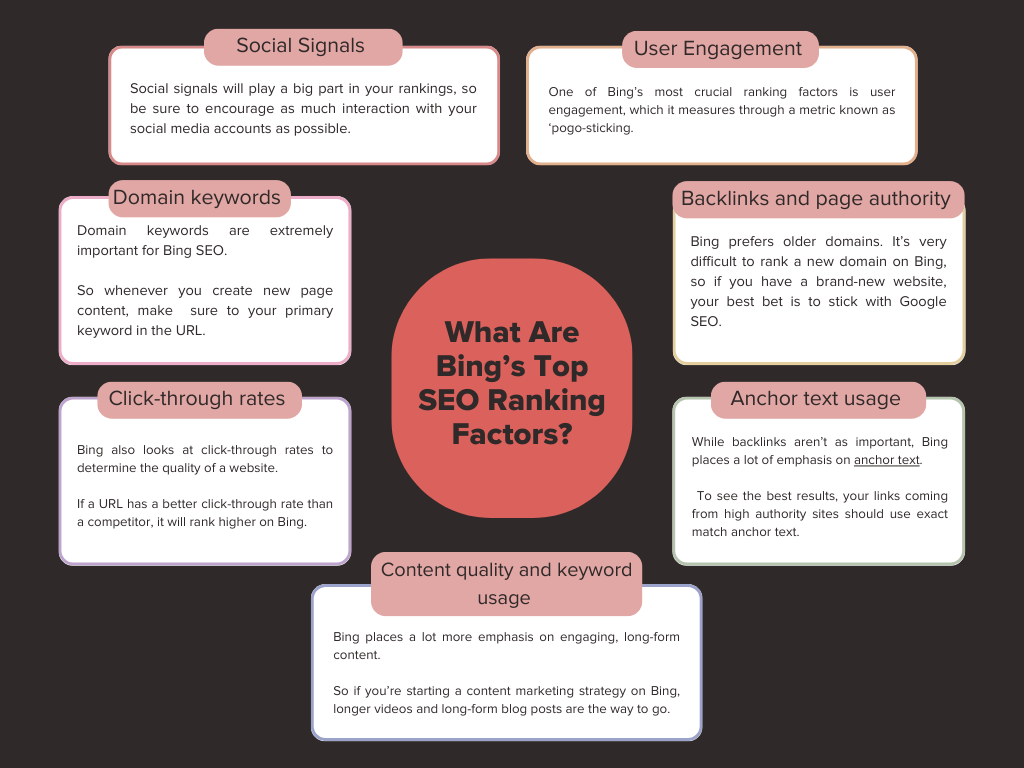


very informative
good one